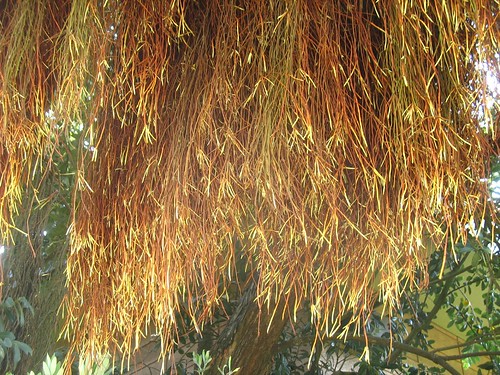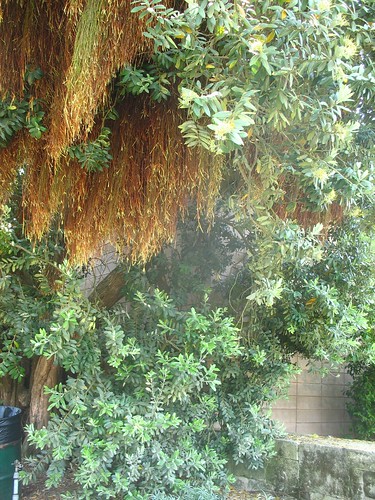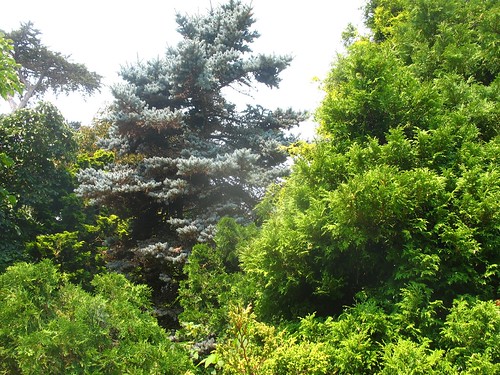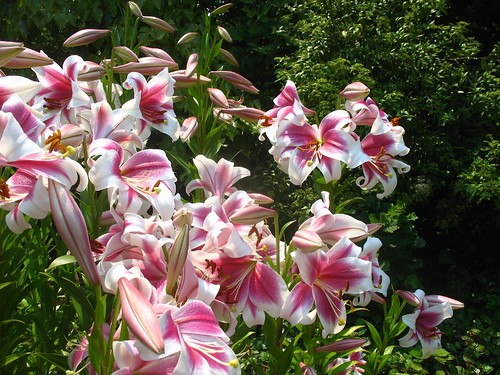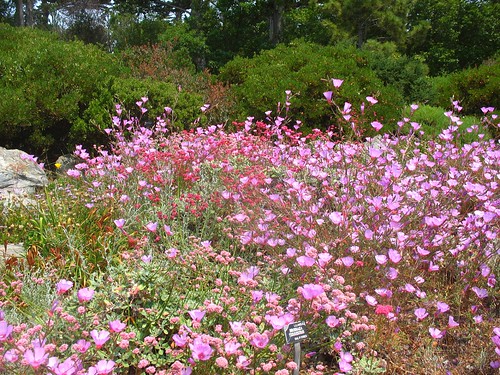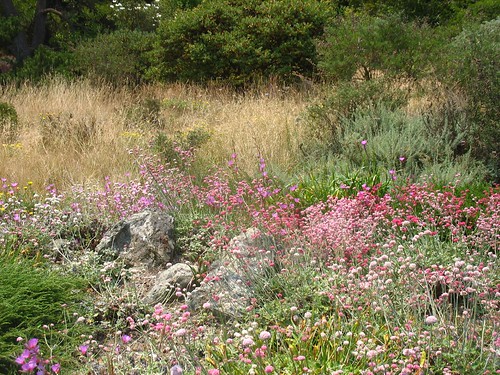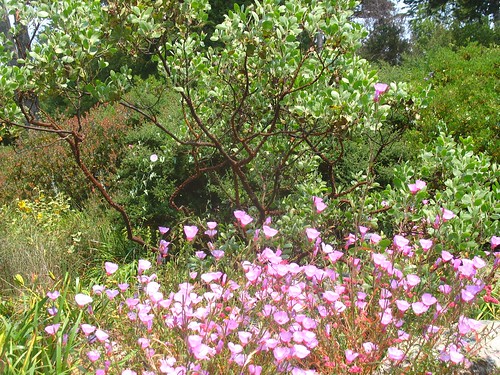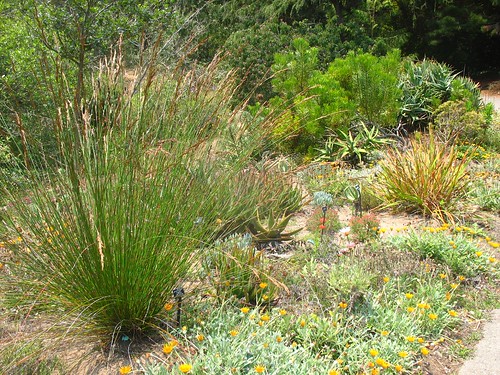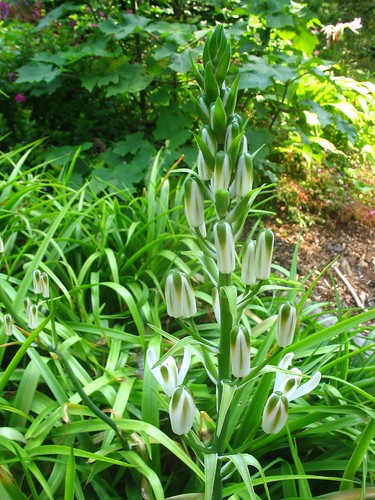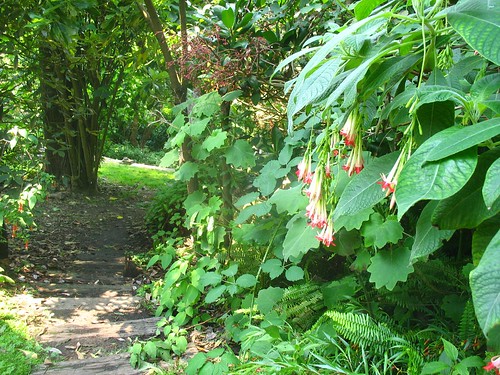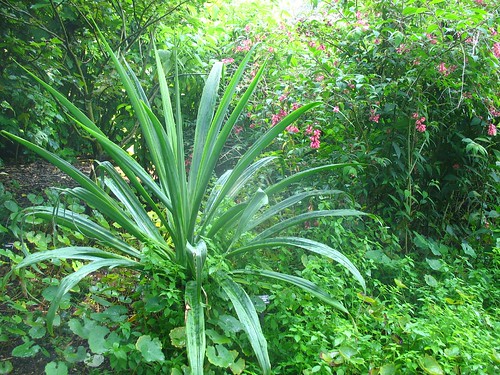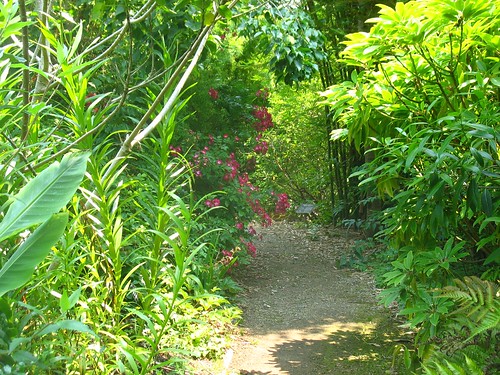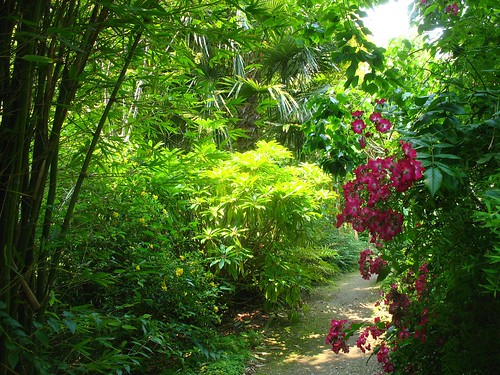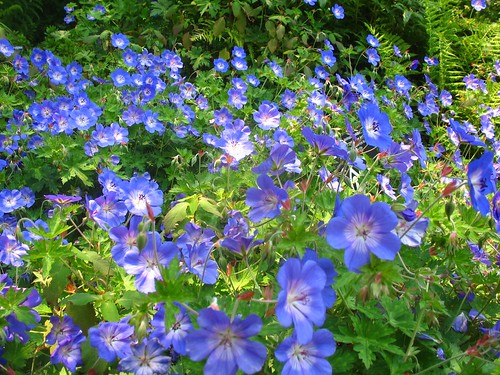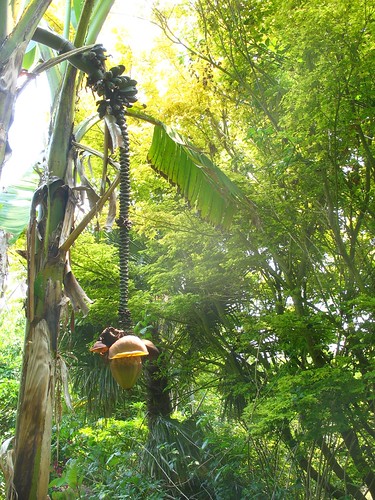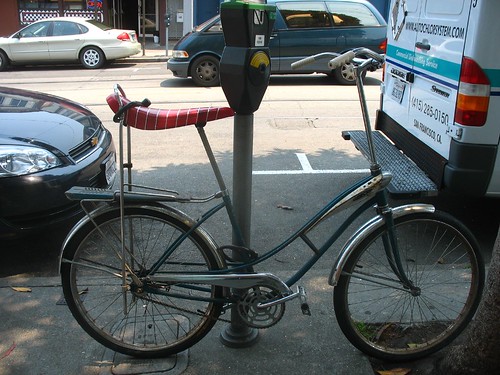7/30/08
7/28/08
Blog post(s) for Christopher C.
He's trying to decide what color(s) to paint his future house.
Houses in San Francisco come in all manner of colors.
I stand ready to show him endless possibilities.
Starting with this one.
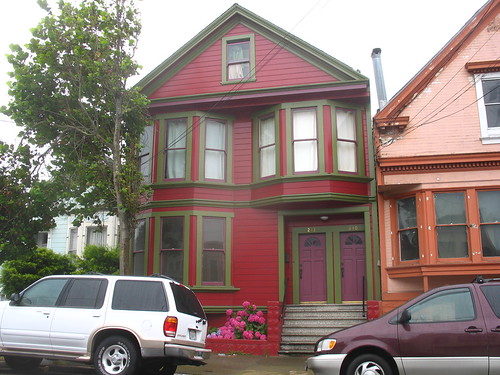
Houses in San Francisco come in all manner of colors.
I stand ready to show him endless possibilities.
Starting with this one.

The Cloud Forest
San Francisco's summer fog feels especially relentless to me this year. I think it's because I'm working in a foggy micro-climate. Last year, I worked in a different city and spent my days in a cubicle under fluorescent lights. This year, I have an office in the fog belt and my desk faces a giant window. It's not foggy every day, but when it is, the fog obliterates even recent memories of sunshine.
Of course, the regular presence of summer fog influences more than just human moods. It dramatically affects plant life. Gardening in the fog belt presents different opportunities to gardeners than what's available just outside. Some opportunities are sharply limited, while others are dramatically expanded. We struggle with warm season vegetables, but we can grow fuchsias and vireyas like nobody's business.
This San Francisco Botanical Garden webpage explains:
Fuchsia boliviana:
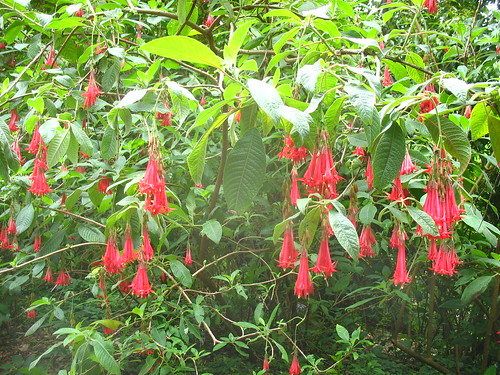
Fuchsia glazioviana climbing up Matudaea trinerva:
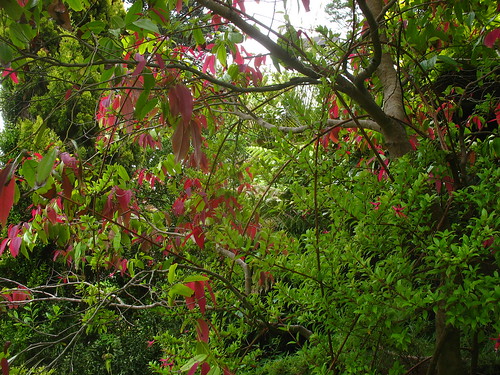
The Matudaea:
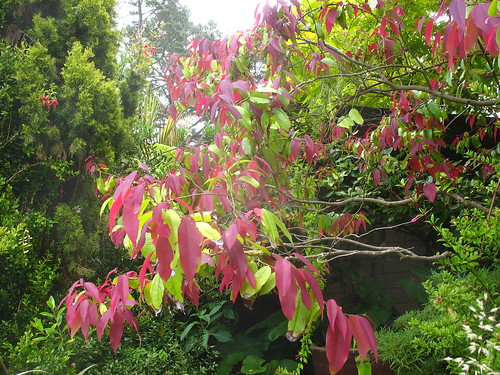
Saurauia madrensis:
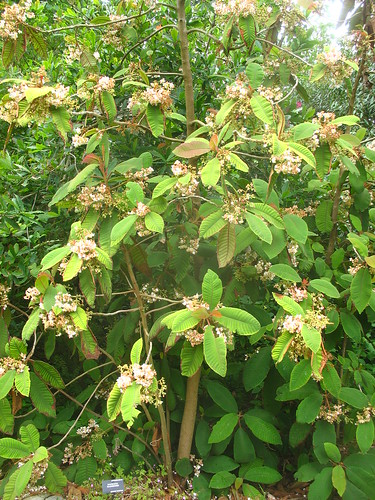
close-up, with bee:
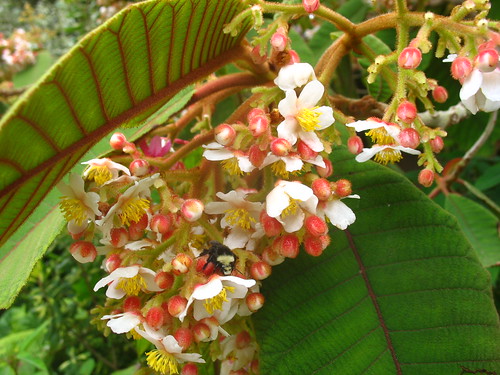
American naturalist and travel writer Peter Matthiessen wrote a book called The Cloud Forest about his long sojourn in the Amazon and high mountains of South America, circa 1960. I finished reading it recently.
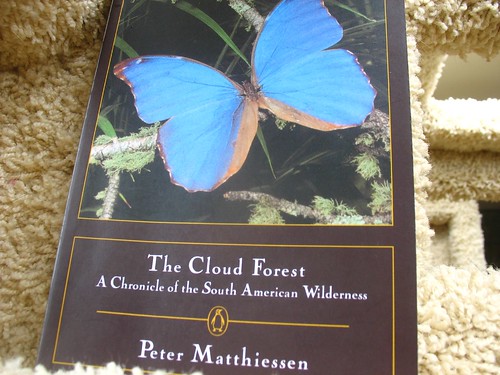
Deeply immersive and utterly foreign, I recommend the book to anyone who needs a little escape or adventure. Matthiessen pays close attention to birds and butterflies, and somewhat less attention to plants. The social history he recounts is fascinating and enlightening, although doubtless some modern readers will consider his observations "problematic"...
After it was over, I particularly enjoyed retracing Matthiessen's progress on Google Maps. And many of the small jungle villages he passed through are bustling cities now, with their own entries on Wikipedia.
Of course, the regular presence of summer fog influences more than just human moods. It dramatically affects plant life. Gardening in the fog belt presents different opportunities to gardeners than what's available just outside. Some opportunities are sharply limited, while others are dramatically expanded. We struggle with warm season vegetables, but we can grow fuchsias and vireyas like nobody's business.
This San Francisco Botanical Garden webpage explains:
"These plants can grow [in San Francisco] because of striking similarities between coastal California's climate and that of mountainous areas in the tropics. The temperature variation between day and night, and between summer and winter, is not very great in the tropics, even on tropical mountains. Coastal California also has moderate temperatures year round due to the ocean's strong influence...Some plants from cloud forests observed today at the Botanical Garden...
Cloud forests are found at elevations where water in moist rising air masses condenses creating a shroud of mist and fog. The high moisture levels are comparable to northern California's wet winters, where a cool ocean current off the coast creates summer fog which softens our Mediterranean summer drought to the extent that [the fog] moves inland. Views from atop tropical mountains are remarkable in their resemblance to panoramic summer views of the Bay Area with thick fog advancing and retreating below higher hills and mountains."
Fuchsia boliviana:

Fuchsia glazioviana climbing up Matudaea trinerva:

The Matudaea:

Saurauia madrensis:

close-up, with bee:

American naturalist and travel writer Peter Matthiessen wrote a book called The Cloud Forest about his long sojourn in the Amazon and high mountains of South America, circa 1960. I finished reading it recently.

Deeply immersive and utterly foreign, I recommend the book to anyone who needs a little escape or adventure. Matthiessen pays close attention to birds and butterflies, and somewhat less attention to plants. The social history he recounts is fascinating and enlightening, although doubtless some modern readers will consider his observations "problematic"...
After it was over, I particularly enjoyed retracing Matthiessen's progress on Google Maps. And many of the small jungle villages he passed through are bustling cities now, with their own entries on Wikipedia.
Not so dry.
The last post was about summer dryness. But it's never very dry during the summer in San Francisco. Because we have this fog.
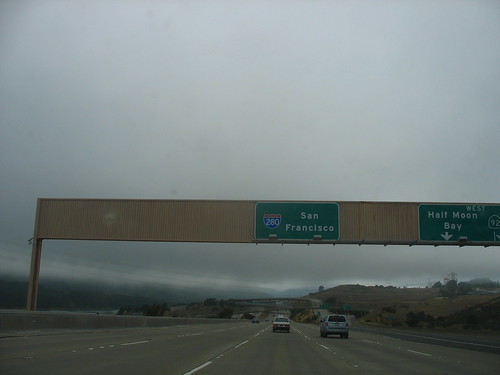
I was in Palo Alto yesterday, 30 minutes south. It was warm and sunny. There wasn't a cloud in the sky. At a farmer's market, people wore shorts and sun hats.
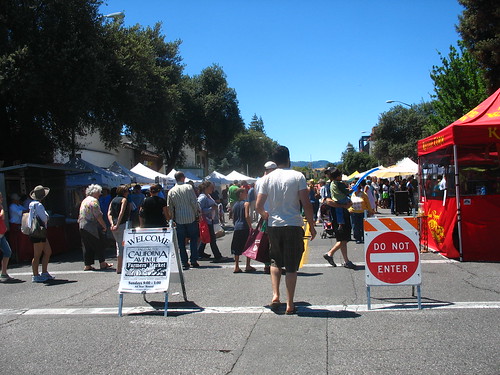
They shopped for perennials.
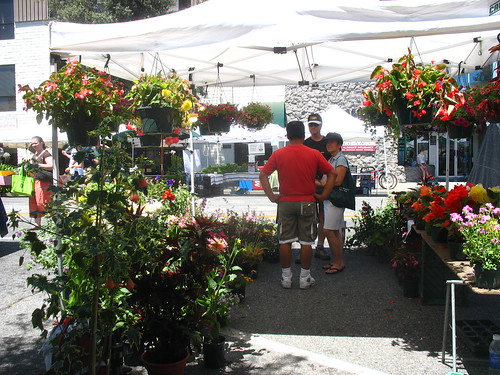
They tried to ignore this godawful folksinger lamenting Iraq and...the high price of real estate.
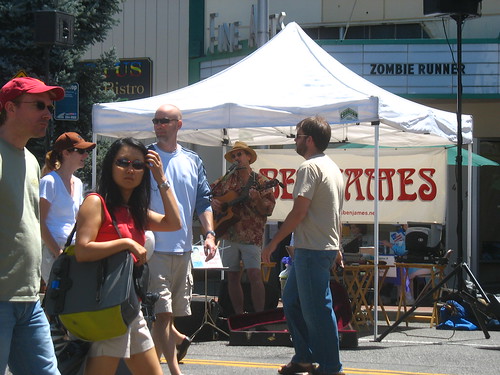
Seriously, this guy was the parody of a bad folksinger. He'd be right at home in a Christopher Guest movie. In other parts of the country, people would throw tomatoes at him. In Palo Alto, he wailed on and on, equally shameless and clueless.
Why, if it wasn't for US marines in Iraq and greedy mortgage lenders, we'd live in peace and harmony. The whole world would be a place of gentle sunshine and happy flowers.
In short, we would all live in California.

Me, I think that's just so much poppyganda.
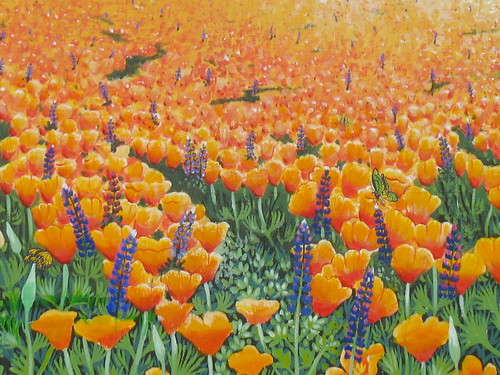

I was in Palo Alto yesterday, 30 minutes south. It was warm and sunny. There wasn't a cloud in the sky. At a farmer's market, people wore shorts and sun hats.

They shopped for perennials.

They tried to ignore this godawful folksinger lamenting Iraq and...the high price of real estate.

Seriously, this guy was the parody of a bad folksinger. He'd be right at home in a Christopher Guest movie. In other parts of the country, people would throw tomatoes at him. In Palo Alto, he wailed on and on, equally shameless and clueless.
Why, if it wasn't for US marines in Iraq and greedy mortgage lenders, we'd live in peace and harmony. The whole world would be a place of gentle sunshine and happy flowers.
In short, we would all live in California.

Me, I think that's just so much poppyganda.

Spotted today
at the San Francisco Botanical Garden:
Naked ladies!
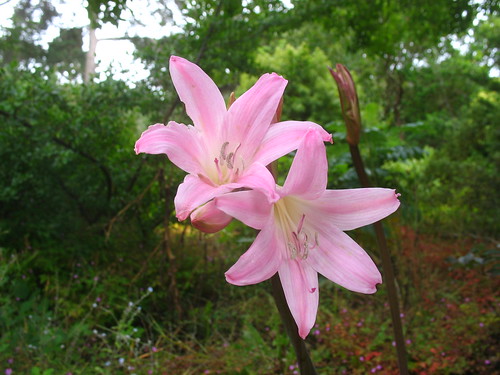
lots of them.

Amaryllis belladonna. You know what that means. The end of summer approacheth.
This time of year fills me with ambivalence. Late summer has unique qualities that I enjoy, yet I feel the creeping dread of winter.
Winter is the rainy season in coastal California. In the California garden, winter rains are a distant memory. This time of year golds and grays and pale greens prevail. I think it's sublimely beautiful, but some people just see a fire hazard. Or, maybe worse, they see dead things.
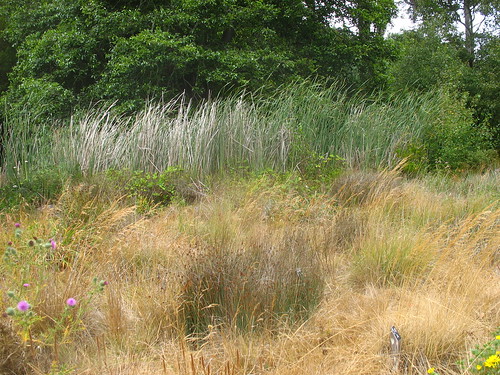
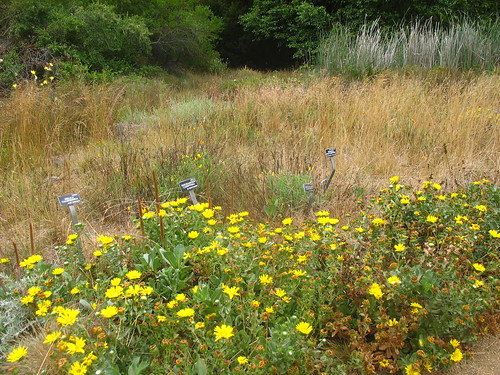
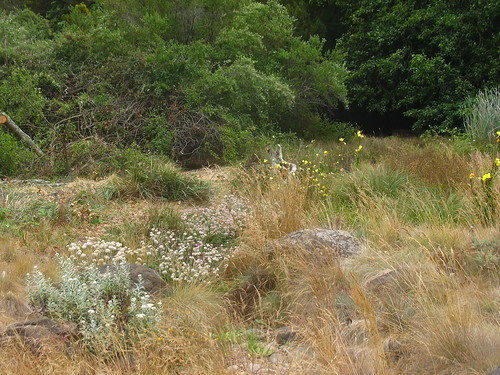
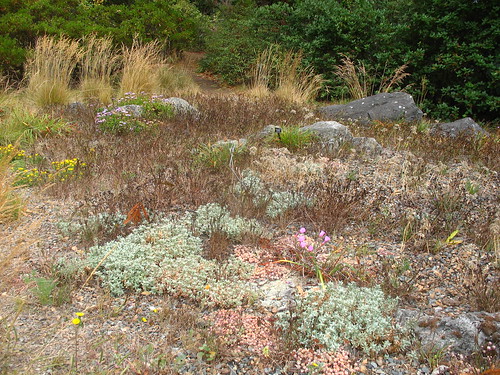
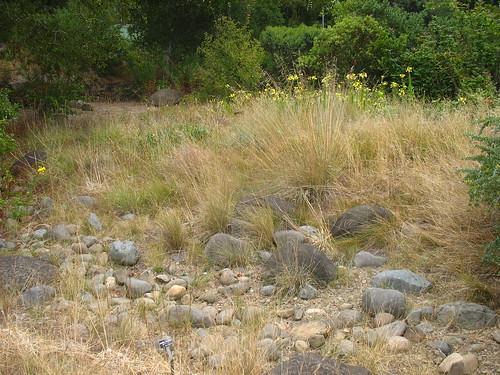
People who know perfectly well that plants in winter dormancy are not dead fail to understand the same phenomenon when it occurs during the summer. The mind is stuck.
The late-blooming spring annual Clarkia is still in flower.
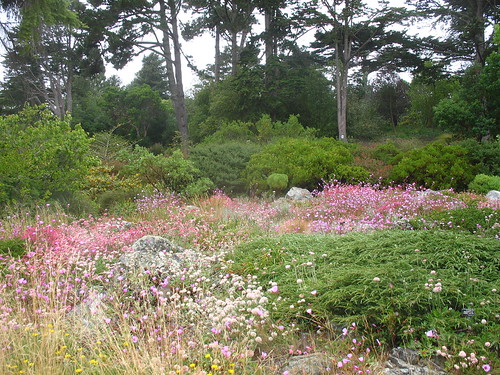
The milkweed Asclepias speciosa won't even come up until the ground has been dry for a month.

And what could be lovelier?
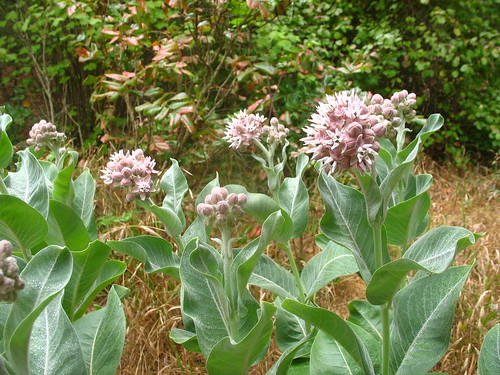
Naked ladies!

lots of them.

Amaryllis belladonna. You know what that means. The end of summer approacheth.
This time of year fills me with ambivalence. Late summer has unique qualities that I enjoy, yet I feel the creeping dread of winter.
Winter is the rainy season in coastal California. In the California garden, winter rains are a distant memory. This time of year golds and grays and pale greens prevail. I think it's sublimely beautiful, but some people just see a fire hazard. Or, maybe worse, they see dead things.





People who know perfectly well that plants in winter dormancy are not dead fail to understand the same phenomenon when it occurs during the summer. The mind is stuck.
The late-blooming spring annual Clarkia is still in flower.

The milkweed Asclepias speciosa won't even come up until the ground has been dry for a month.

And what could be lovelier?

7/25/08
Friday morning garden
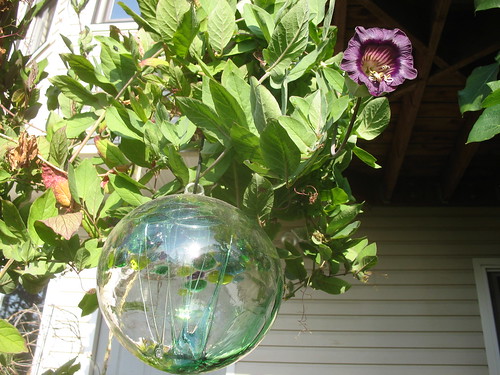
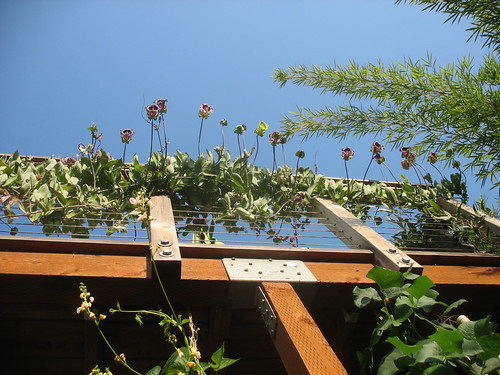
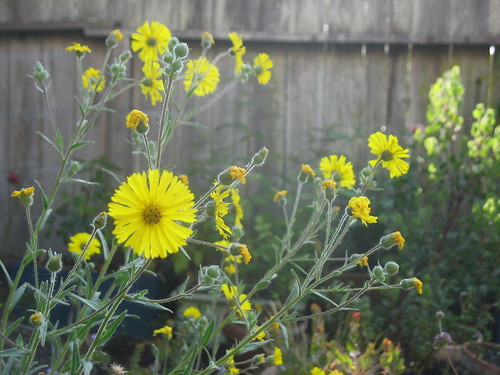
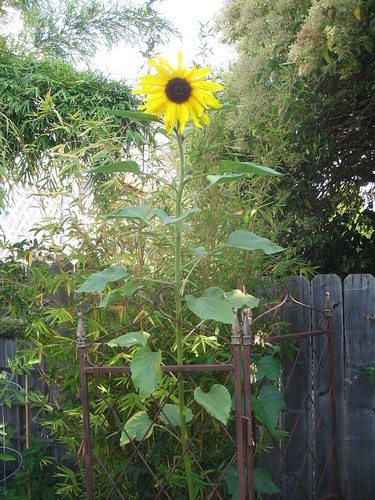
Shasta Daisy was invented in California by Luther Burbank.
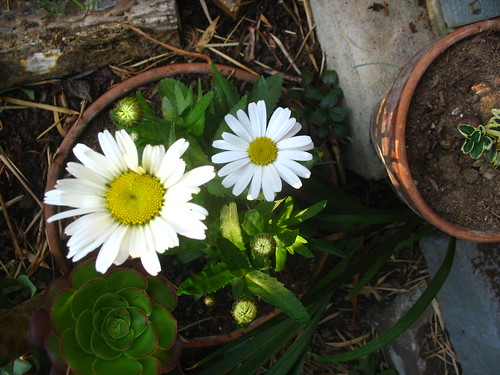
This Fuchsia 'Miep Aalhuzien' (or something like that) is new, and it has the prettiest green leaves. I got it at the Botanical Garden. They grow tall and have tons of small pink fuchsia flowers.
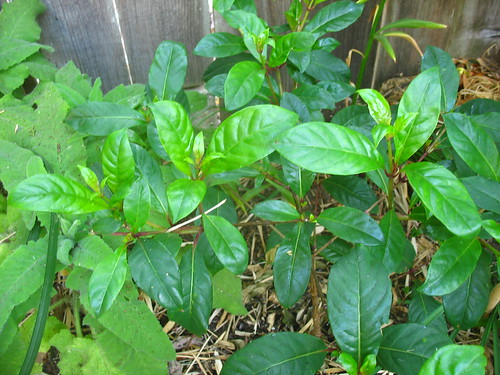
Phygelius... I had this before and it didn't work out, but I want to try again. Nurseries sell a pinkish one, and I want it too.

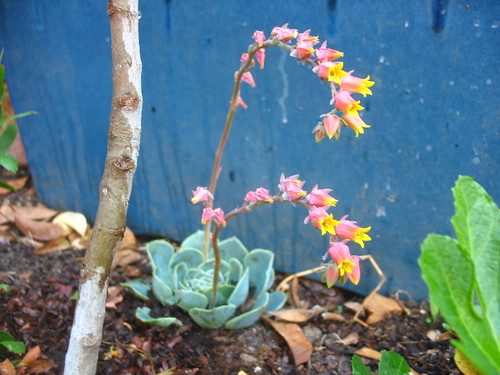
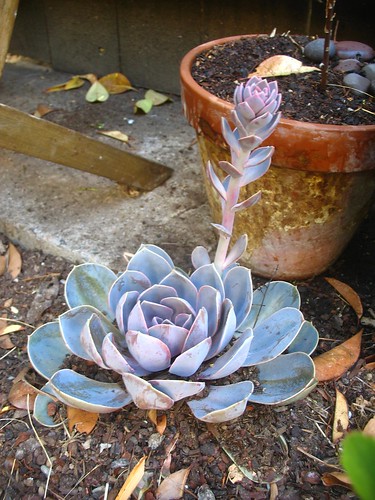
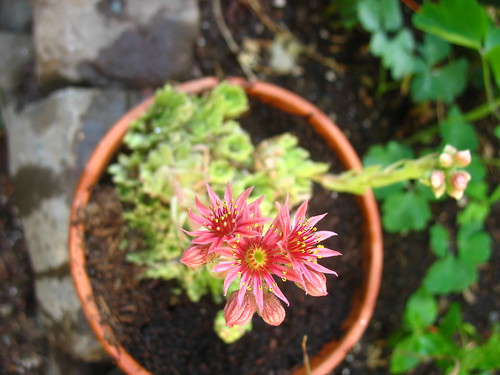
I hope this Dahlia continues to do well under the deck.
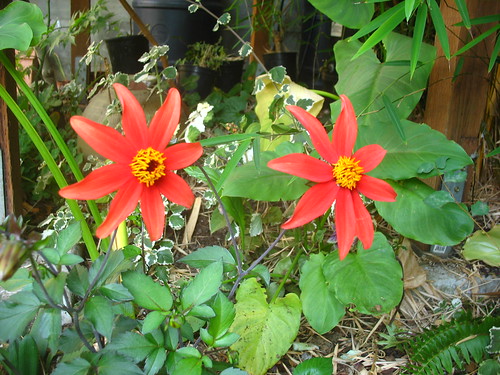
This other area under the deck is a little too lush for me, but it is what it is.

The Dracaena marginata is a house plant. The cats were accosting it, so I put it outside. Not sure what its future is. The large-leafed Bartlettina sordida (on the left) grows up and fills this whole space during the rainy season. I had to cut it back really hard last year because winter storms shredded it.
Hopefully we'll have gentler storms this year.
7/22/08
Lunchtime Botanical Garden
Subscribe to:
Comments (Atom)
